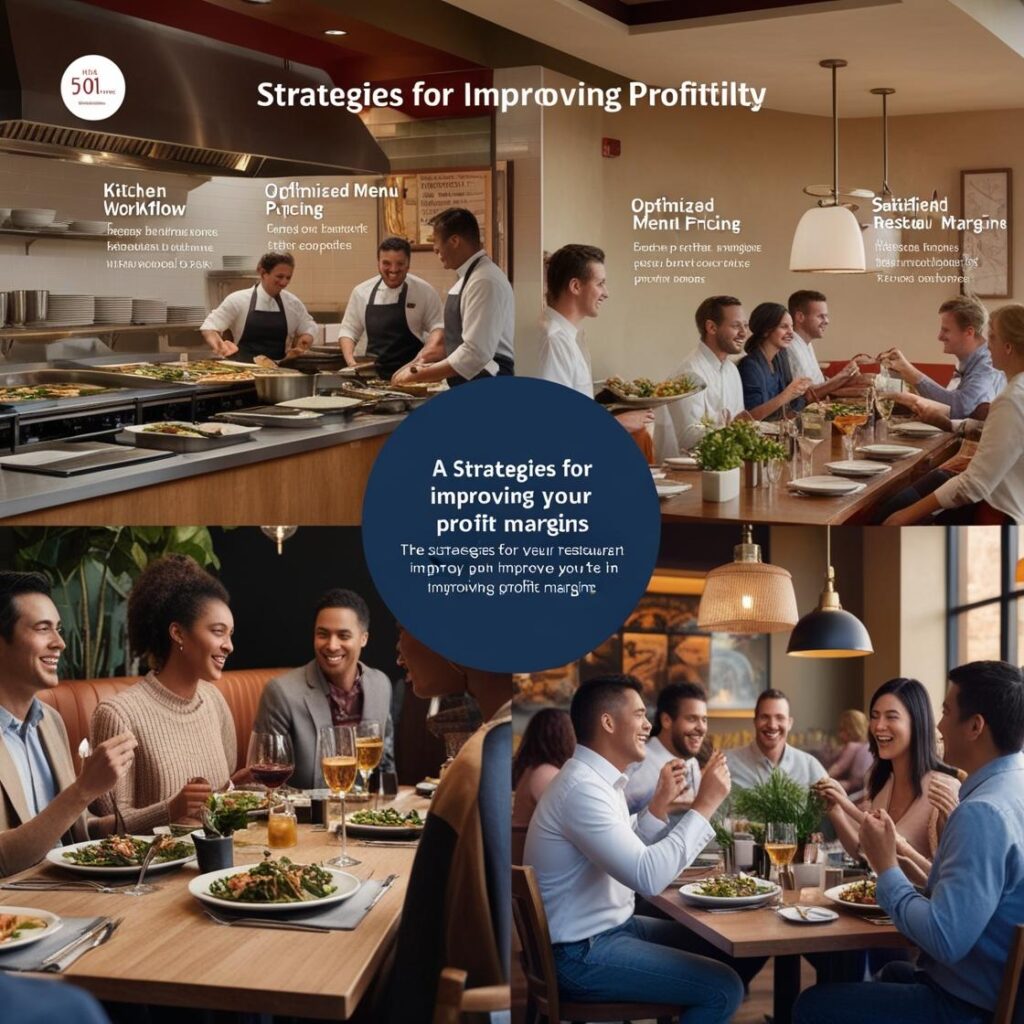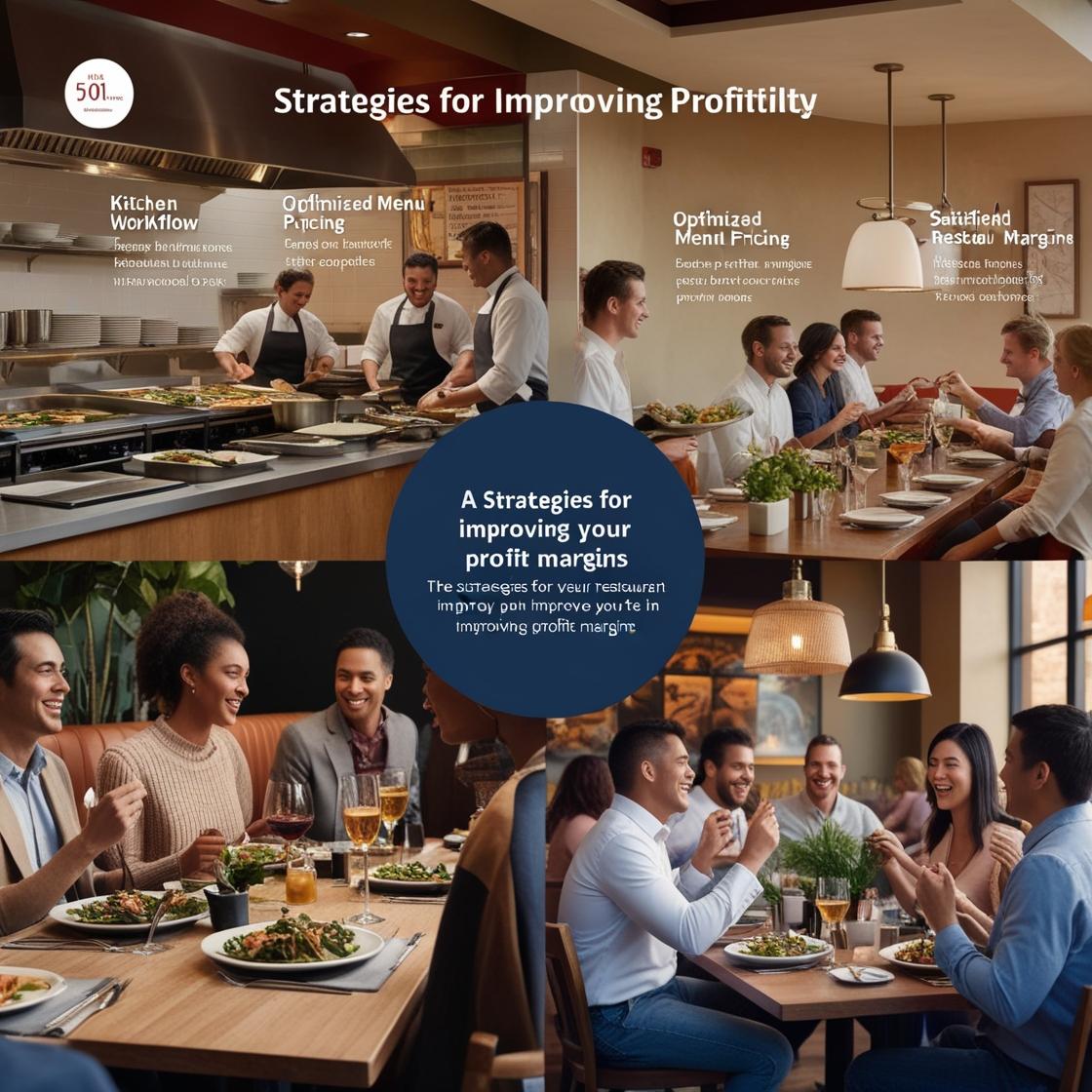Running a restaurant can be a rewarding venture, but it comes with its financial challenges. With thin profit margins being a common concern in the industry, it’s essential to continually find ways to reduce costs and increase revenue without sacrificing quality. In this article, we’ll explore six actionable tips that can help you improve your restaurant’s profit margins and achieve long-term financial success.
1. Analyze and Control Food Costs
Food costs are one of the largest expenses for any restaurant, so managing them effectively is crucial for improving profit margins. By regularly reviewing and controlling food costs, you can minimize waste and increase profitability.
How to Do It:
- Standardize recipes: Ensure that your kitchen staff follows standardized recipes for every dish, which helps control portion sizes and reduce ingredient waste.
- Conduct regular inventory checks: Keep track of stock levels to avoid over-ordering and identify any discrepancies in food usage. Use inventory management software to streamline this process.
- Negotiate with suppliers: Build strong relationships with your vendors and negotiate better prices for bulk orders or long-term contracts.
2. Optimize Menu Pricing and Design
Your menu is more than just a list of offerings—it’s a powerful tool for driving profitability. By optimizing your menu pricing and design, you can encourage customers to order high-margin items and boost overall sales.
How to Do It:
- Implement strategic pricing: Use a mix of psychological pricing (e.g., pricing items at $9.99 instead of $10) and cost-based pricing to ensure profitability. Focus on upselling high-margin dishes and drinks.
- Use menu engineering: Identify your most profitable and popular items (stars) and place them in prominent positions on your menu. Minimize or eliminate low-margin, low-popularity items (dogs).
- Keep the menu concise: A streamlined menu reduces food waste and speeds up kitchen operations. Focus on dishes that are both profitable and popular with your target audience.
3. Reduce Labor Costs Without Compromising Service Quality
Labor is another major expense for restaurants, but cutting staff can negatively affect the customer experience. Instead of reducing headcount, focus on improving labor efficiency to cut costs without sacrificing service quality.
How to Do It:
- Cross-train staff: Train employees to handle multiple roles (e.g., host, server, and barista) so they can be more flexible during busy or slow periods.
- Optimize scheduling: Use scheduling software to analyze sales patterns and staff accordingly. Schedule more employees during peak times and fewer during slower hours to avoid overstaffing.
- Incentivize performance: Offer bonuses or incentives for staff who help meet sales or efficiency targets, encouraging them to contribute to the restaurant’s overall success.
4. Improve Energy Efficiency to Reduce Utility Costs
Energy costs can add up quickly, but there are several ways to reduce these expenses while making your restaurant more environmentally friendly. Small changes in energy consumption can have a significant impact on your bottom line.
How to Do It:
- Upgrade to energy-efficient equipment: Invest in energy-efficient appliances, such as refrigerators, ovens, and lighting, which consume less power and reduce utility bills.
- Implement energy-saving practices: Train staff to turn off equipment when not in use and lower heating or cooling settings during off-hours.
- Consider energy audits: Hire a professional to conduct an energy audit of your restaurant to identify specific areas where you can cut energy costs.
5. Streamline Operations with Technology
Implementing technology in your restaurant’s operations can improve efficiency, reduce waste, and increase customer satisfaction, all of which contribute to higher profit margins.
How to Do It:
- Use a modern POS system: A POS system can streamline order taking, track inventory, and provide detailed reports on sales and expenses, helping you make data-driven decisions.
- Automate online ordering: If your restaurant offers delivery or takeout, integrate online ordering systems that automate the process and reduce the need for extra staff.
- Monitor food waste: Use technology to track waste and analyze patterns to identify where improvements can be made in portion sizes, menu offerings, or inventory control.
6. Focus on Customer Retention and Loyalty
It’s often more cost-effective to retain existing customers than to attract new ones. Building customer loyalty can lead to more repeat business, higher average spending, and better word-of-mouth referrals.
How to Do It:
- Launch a loyalty program: Offer incentives for repeat visits, such as discounts, free meals, or exclusive access to new menu items. A successful loyalty program encourages frequent diners to return.
- Personalize customer experiences: Use customer data from your POS system to tailor offers, emails, and promotions to individual preferences and spending habits.
- Encourage online reviews and referrals: Positive online reviews can boost your restaurant’s reputation and drive more traffic. Encourage satisfied customers to leave reviews or refer friends with special promotions.
Conclusion
Improving your restaurant’s profit margins requires a strategic approach to cost control, pricing, and operational efficiency. By focusing on managing food and labor costs, optimizing your menu, and leveraging technology, you can achieve sustainable profitability while maintaining high levels of customer satisfaction.
Looking for tailored strategies to boost your restaurant’s profitability? Contact Contact Restaurant Secret Hacks or download our ebook for in-depth insights.




